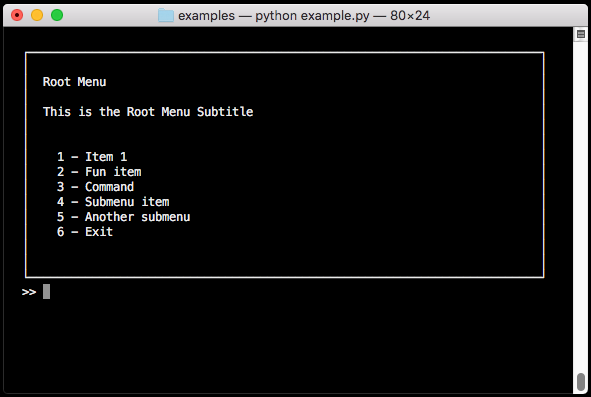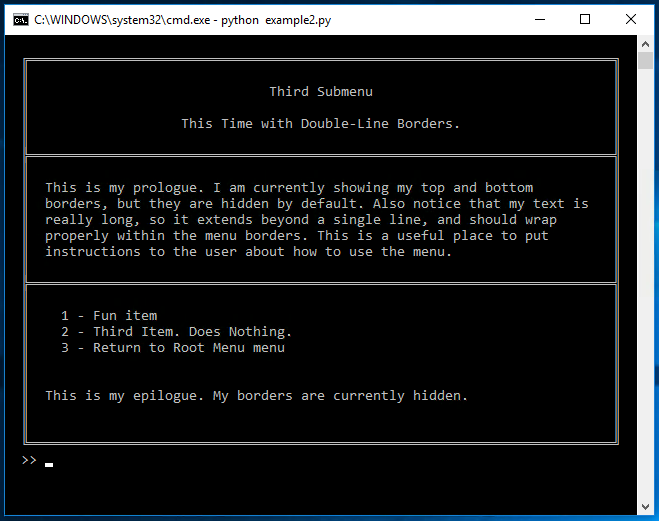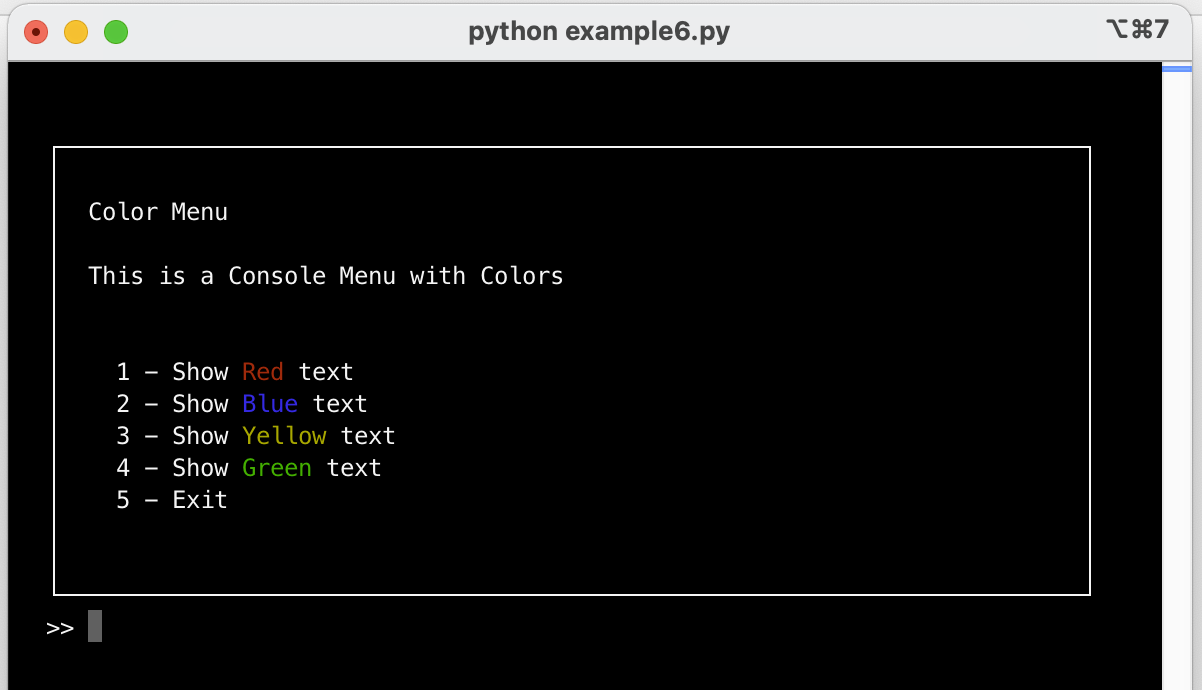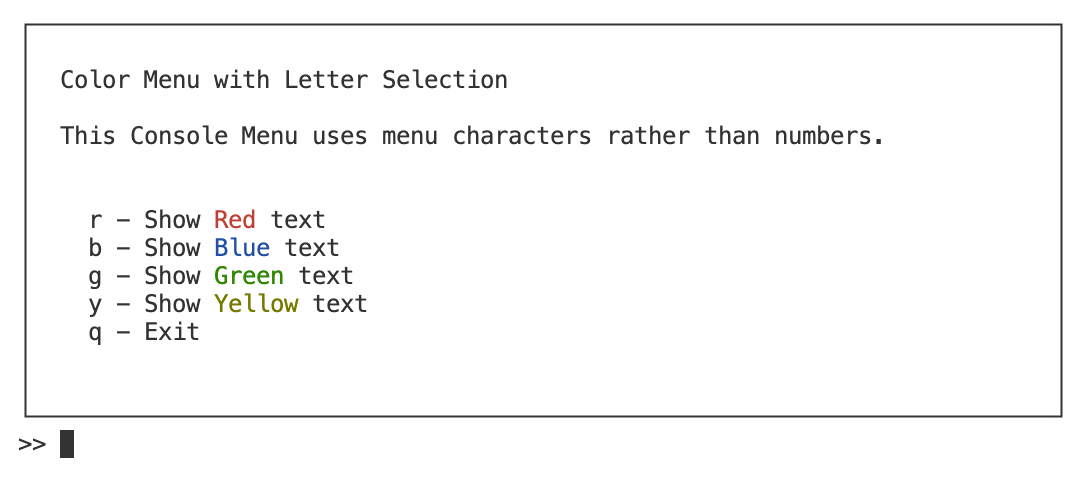A simple Python menu-based UI system for terminal applications. Perfect for those times when you need a menu-driven program, but don’t want the overhead or learning curve of a full-fledged GUI framework.
Derived from the curses-menu project, but with curses dependency removed.
http://console-menu.readthedocs.org/en/latest/
Tested on Python 3.7 - 3.11, as well as pypy and pypy 3.
Installation can be performed by running pip
pip install console-menuIt's designed to be pretty simple to use. Here's an example
# Import the necessary packages
from consolemenu import *
from consolemenu.items import *
# Create the menu
menu = ConsoleMenu("Title", "Subtitle")
# Create some items
# MenuItem is the base class for all items, it doesn't do anything when selected
menu_item = MenuItem("Menu Item")
# A FunctionItem runs a Python function when selected
function_item = FunctionItem("Call a Python function", input, ["Enter an input"])
# A CommandItem runs a console command
command_item = CommandItem("Run a console command", "touch hello.txt")
# A SelectionMenu constructs a menu from a list of strings
selection_menu = SelectionMenu(["item1", "item2", "item3"])
# A SubmenuItem lets you add a menu (the selection_menu above, for example)
# as a submenu of another menu
submenu_item = SubmenuItem("Submenu item", selection_menu, menu)
# Once we're done creating them, we just add the items to the menu
menu.append_item(menu_item)
menu.append_item(function_item)
menu.append_item(command_item)
menu.append_item(submenu_item)
# Finally, we call show to show the menu and allow the user to interact
menu.show()pip install -r requirements-docs.txt
pip install -v -e .
pytest





